BUCKET LIST FOR THIS REGION
- Marvel at the petrified trees of Deadvlei
- Climb red and golden dunes against a blue sky at the must-see Sossusvlei
- Swim in the Sesriem Canyon (if it has water in it)
- Take in the views of the mountain pass at Spreetshoogte
- Experience the awe you will feel under some of the world’s most spectacular night skies
- Drift peacefully above the desert landscape aboard a hot-air balloon
Namib-Naukluft National Park
Proclaimed in 1979 as Namib-Naukluft Park, this national park now is Namibia’s largest conservation area, covering an expansive 49,768 square kilometres. It emerged from the amalgamation of several distinct regions, including the Namib Desert Park, established in 1962, and the Naukluft Mountain Zebra Park, proclaimed in 1968. This vast expanse culminated in the creation of a sanctuary renowned for its breathtaking natural wonders.
At the heart of the park lies Sossusvlei, a legendary attraction celebrated for its mesmerising white pan ensconced by towering sand dunes, among the tallest in the world. Adjacent to Sossusvlei, the haunting Deadvlei captivates visitors with its stark landscape adorned by ancient camel-thorn skeletons. Beyond these iconic sites, Namib-Naukluft National Park boasts a wealth of diverse features, including the enchanting Sesriem Canyon, the fascinating Welwitschia Trail, the rugged Naukluft Mountains, and the majestic Kuiseb Canyon. This extraordinary conservation area stands as a testament to Namibia’s commitment to preserving its natural heritage and captivating visitors from around the globe.
Namib Section
Nestled between the Swakop and Kuiseb river valleys, this section of Namib- Naukluft National Park teems with a rich array of wildlife uniquely adapted to its desert environment. Across the vast desert plains, ostrich, springbok, and gemsbok roam freely, while giraffes, blue wildebeest, and warthog add to the landscape’s allure. In the canyons carved by the Swakop and Kuiseb rivers, you’ll find Hartmann’s mountain zebra, klipspringer, and baboon, alongside elusive predators like leopard and spotted hyena. Among the smaller denizens, black-backed jackals, bat-eared foxes, and ground squirrels thrive, while a significant population of Lappet-faced Vultures soars overhead.
Intriguing adaptations abound among the smaller inhabitants of the Namib dunes. Witness the remarkable ingenuity of the fog-basking beetle, Onymacris unguicularis, as it harnesses fog condensation for survival, or observe the mesmerising “thermal dance” of the shovel-snouted lizard, Meroles anchietae, a testament to their resilience against the relentless desert heat. The nearby Gobabeb Training and Research Centre, nestled along the banks of the Kuiseb River, stands as a beacon of international acclaim for its pioneering research in Namib ecology, although its gates typically remain closed to the public, barring special “open” days.
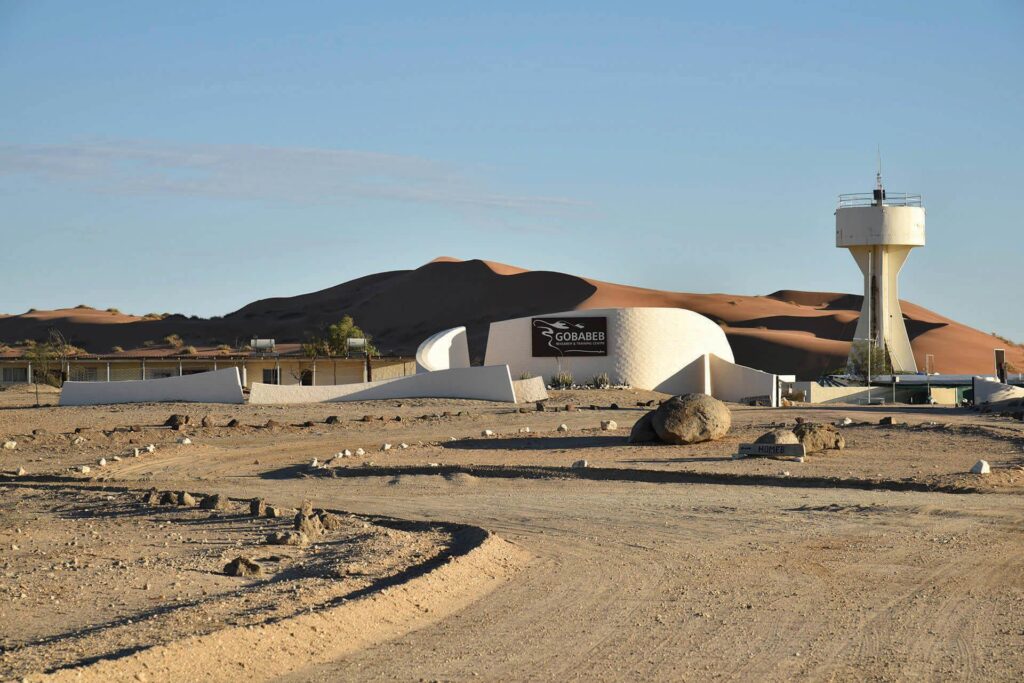
Sossusvlei
Many visitors to Namibia say that no part of the desert is visually more dramatic than Sossusvlei with its monumentally high dunes. These gigantic star-shaped mountains of sand – one of the largest was measured from the base as 325 metres high – are a sought-after object for artists and photographers. The warm tints of the sand contrast vividly with the dazzling white surfaces of the large deflationary clay pans at their bases. One of these, referred to as Deadvlei, is a large ghostly expanse of dried white clay, punctuated by skeletons of ancient camel thorn trees, carbon-dated as being between 500 and 600 years old. Sossusvlei’s mountainous dunes lie at the end of an erosional trough formed by the Tsauchab River. They are shaped by strong multi-directional winds, primarily the southwester, and have three to five sinuous crests, which meet at the highest point to give them their characteristic star shapes. Visitors are allowed access to Sossusvlei only between sunrise and sunset. The first 60 km of the road from Sesriem to Sossusvlei have a permanent surface suitable for sedan cars, whereas the last five-kilometre stretch of sandy track is negotiable by 4×4 vehicles only. A shuttle service is available for the last 5 km.
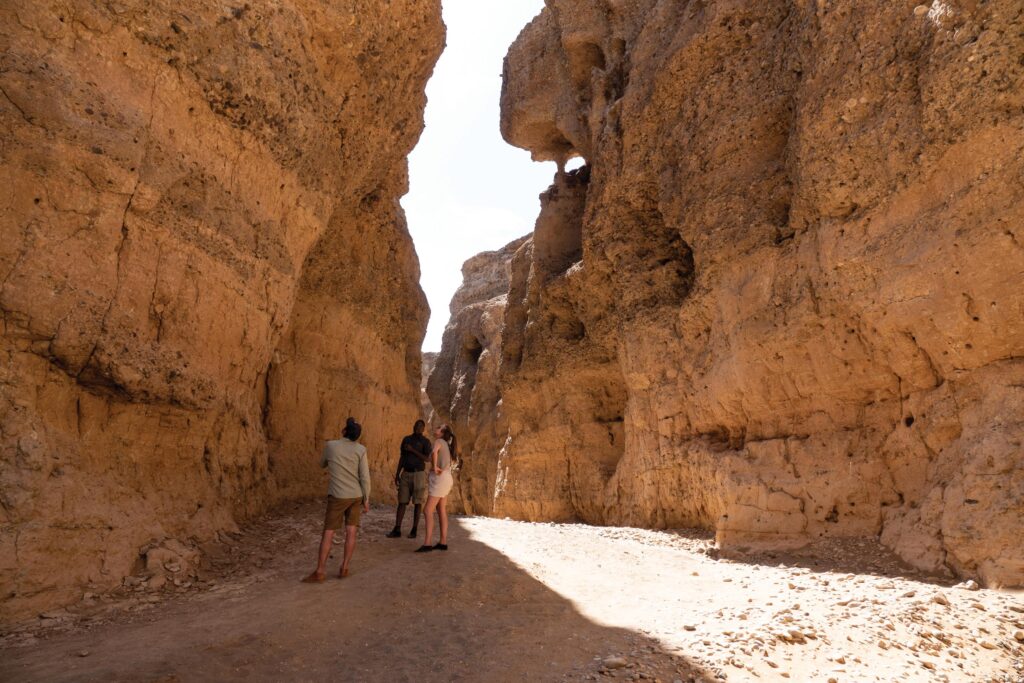
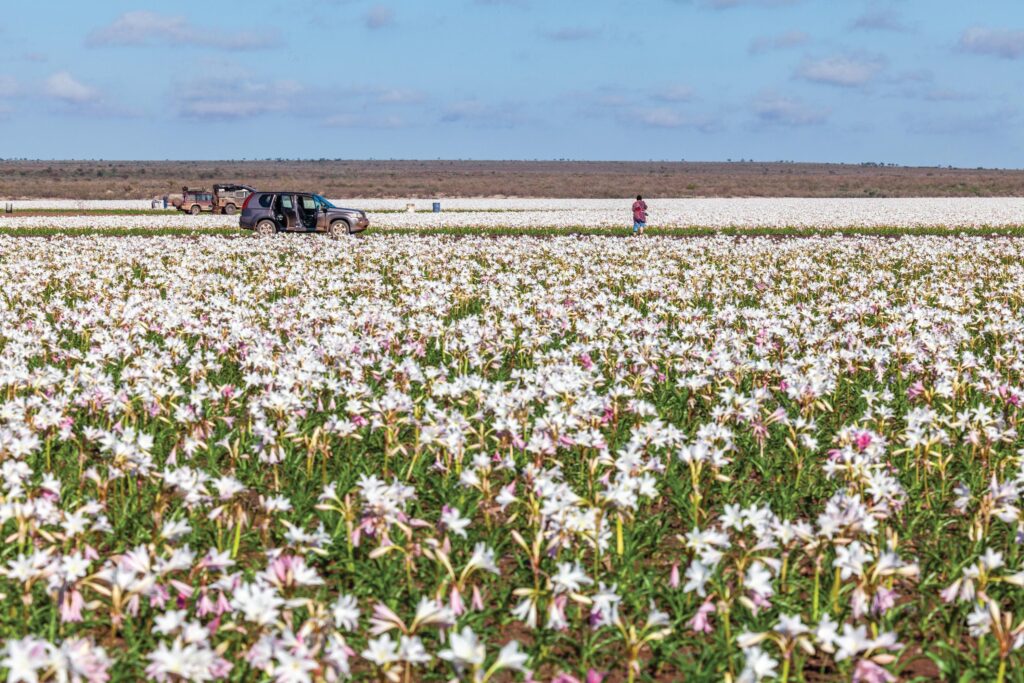
SESRIEM CANYON
At Sesriem, visitors to Sossusvlei and other attractions in this region find the permit office complex, serving as the gateway to adventure. Just four kilometres south, Sesriem Canyon awaits, a testament to the relentless forces of erosion over centuries. Carved into the landscape, this narrow gorge stretches approximately one kilometre in length and plunges 30–40 metres deep. At its base lie replenishing pools, vital oases particularly after rainfall. Sesriem’s name harkens back to the pioneering days when settlers ingeniously used six rawhide thongs to draw water from these pools. Flowing through Sesriem Canyon, the Tsauchab River carries on its journey toward the iconic Sossusvlei, weaving tales of resilience and adaptation in the heart of the desert.
MALTAHÖHE
Maltahöhe, with its intriguing history and unique natural phenomena, is found about 110 km west of Mariental on the C19 en route to Sossusvlei.
The nearby salt pan on the farm Sandhof, although typically dry, transforms into a spectacle of life during rainy seasons, with vibrant amaryllis lilies bursting into bloom seemingly overnight. This ephemeral display attracts visitors from far and wide, creating a bustling atmosphere in Maltahöhe during the short-lived lily season.
The Maltahöhe Hotel is one of Namibia’s oldest country hotels. Its historical significance adds to the charm of the town, offering a glimpse into the past amidst the desert landscape.
Today, Maltahöhe is undergoing a remarkable transformation into a hub of sustainability. The RuralRevive project spearheads this endeavour, aiming to create a desert-based economy rooted in community transformation. By fostering opportunities for local residents to supply fresh organic produce for tourism operations, the project is not only creating entrepreneurial and employment opportunities but also tackling wealth inequality and revitalising the community.
Naukluft Section
The Naukluft section of the park is a sanctuary, originally established to protect Hartmann’s mountain zebra from competition with livestock on neighbouring farms. Beyond the conservation efforts, Naukluft is a geologist’s haven, boasting massive and diverse rock formations that captivate the imagination. Horizontally folded layers of igneous rock, quartzite, dolomite, and shale create awe-inspiring patterns, offering a glimpse into the Earth’s ancient history.
Within the park’s boundaries, five distinct vegetation communities thrive, supporting a rich diversity of tree and shrub species, as well as various aloes. Wildlife abounds in the Naukluft, with notable inhabitants including kudu, gemsbok, klipspringer, duiker, steenbok, leopard, baboon, black-backed jackal, bat-eared fox, African wildcat, caracal, and aardwolf. Moreover, Naukluft’s steep cliffs serve as nesting grounds for numerous cliff-breeding bird species, including the majestic Verreaux’s Eagles.
PERMITS FOR NAMIB-NAUKLUFT NATIONAL PARK
Permits for the Namib-Naukluft Park are available at the permit offices of the Ministry of Environment, Forestry and Tourism in:
- Swakopmund (+264) 64 40 4576
- Walvis Bay (+264) 64 20 5971
- Windhoek (+264) 61 284 2111
- Permits are also available at Sesriem.
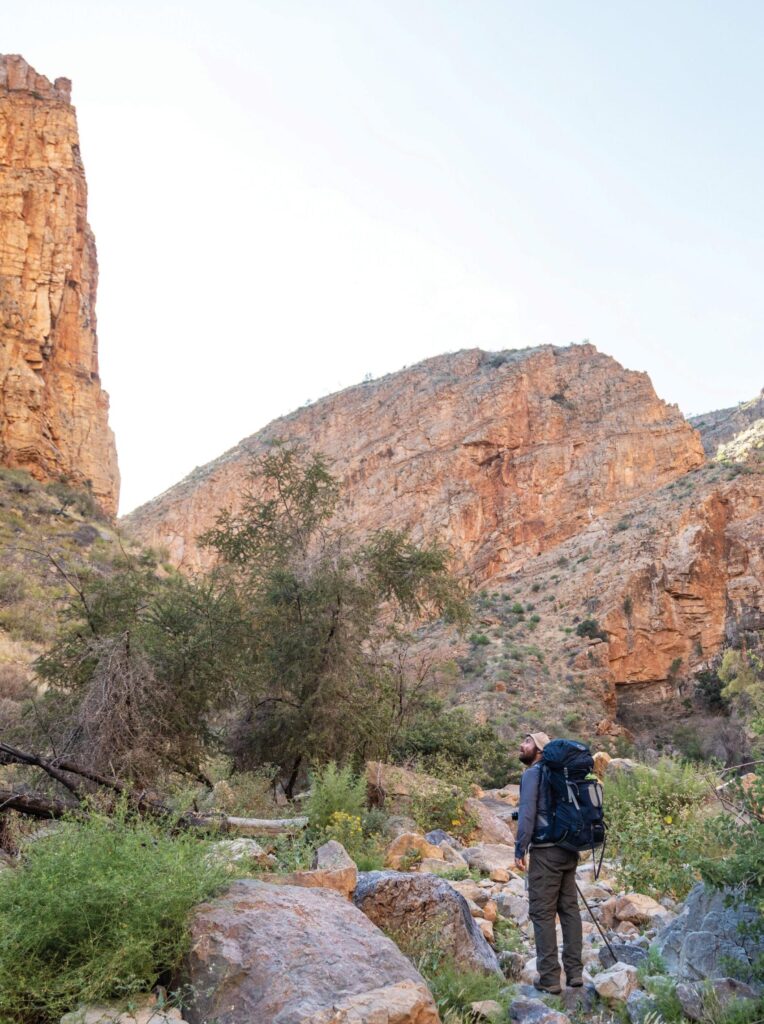
Namibrand Nature Reserve
What began as a visionary quest to expand the horizons of the Namib Desert culminated in the creation of the NamibRand Nature Reserve during the latter half of the 1980s. This ambitious endeavour aimed to unite numerous former sheep farms, fostering the rehabilitation of the land into a sanctuary free from fences.
The reserve showcases the diverse facets of the Namib Desert, weaving together a living tapestry of colour and contour that delights artists and photographers alike. From towering dunes to rugged rocky outcrops, NamibRand presents a visual utopia brimming with natural splendour. Its diverse ecosystems support a rich array of wildlife, including gemsbok, giraffe, mountain and plains zebra, springbok, red hartebeest, bat- eared fox, spotted hyena, Cape fox, and African wildcat. In the rocky terrain, elusive species such as kudu, klipspringer, baboon, and leopard find refuge, while the dunes harbour a vibrant microfauna of lizards, beetles, spiders, and even the elusive golden mole. Moreover, NamibRand is a haven for bird enthusiasts, boasting over a hundred recorded species within its boundaries.
Spanning 202,000 hectares and comprising 15 former farms, the reserve ranks among the largest private nature reserves in Southern Africa. Notably, NamibRand holds the distinction of being an International Dark Skies Reserve, offering unparalleled opportunities for stargazing and celestial exploration.
Based in the reserve are the Namib Desert Environmental Education Trust (NaDEET) Centre and the NamibRand Desert Research & Awareness Centre.
DUWISIB CASTLE
About 72 kilometres southwest of Maltahöhe, nestled amidst undulating red hills, stands a mediaeval-like stronghold: Duwisib Castle. Crafted from red sandstone, this architectural marvel was commissioned by the legendary Baron von Wolf for his American wife, Jayta. Much of the building materials and furnishings were transported from Germany, arriving by ship at Lüderitz before being hauled by ox wagon to Duwisib.
This historic monument is currently closed for accommodations. However, the caretaker, if present, graciously opens its doors daily for visitors. It is not guaranteed that you’ll find it open, but travellers passing through are welcome to stop and see if you can catch a glimpse of the castle’s century-old interior, fitted with its original furniture and artworks.
Top adventures in this area
HOT-AIR BALLOON
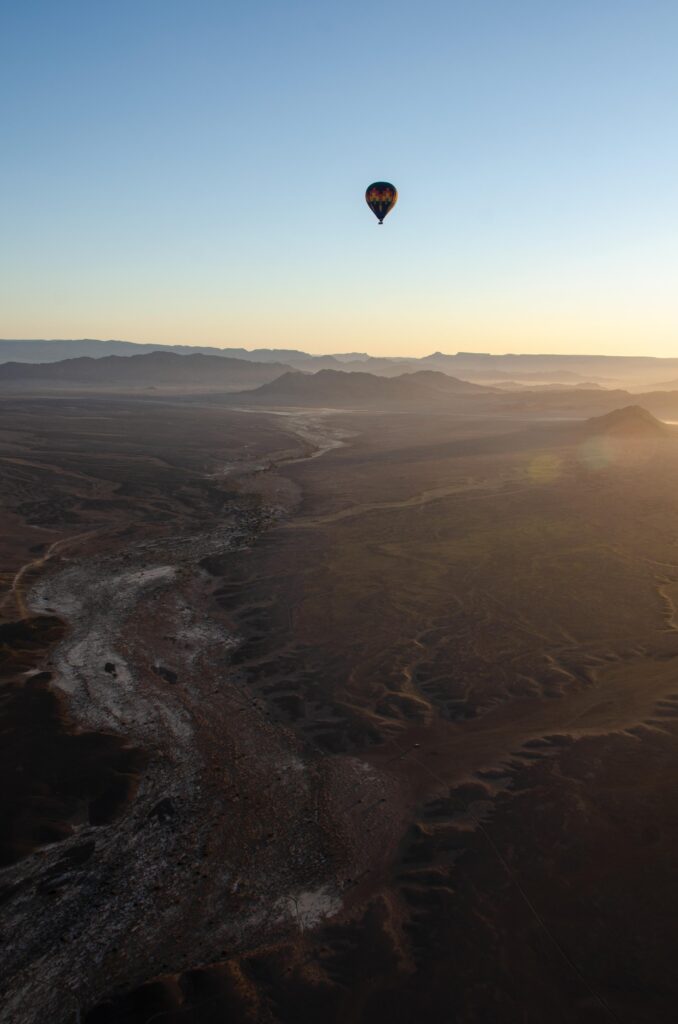
As you ascend gently into the sky, you’ll be treated to a mesmerising bird’s- eye view of the desert plains, majestic dunes, and intriguing inselbergs below. The tranquillity of the early morning hours, combined with the awe-inspiring scenery, creates a sense of serenity and wonder that is unparalleled. Namibia’s ideal atmospheric conditions set the stage for unforgettable air adventures, offering travellers the opportunity to experience the breathtaking beauty of the landscape from a unique perspective. Drifting silently over the Namib Desert in a hot-air balloon is a once-in-a-lifetime experience that leaves an indelible mark on the soul.
Namib Sky Balloon Safaris operates from its launch site south of Sesriem, while Samawati operates flights over the Tsondab Vlei area from its base near Solitaire. Hot Air Ballooning, based at Swakopmund, operates flights behind the dune belt at the coast. All balloon flights are subject to weather conditions.
HIKING
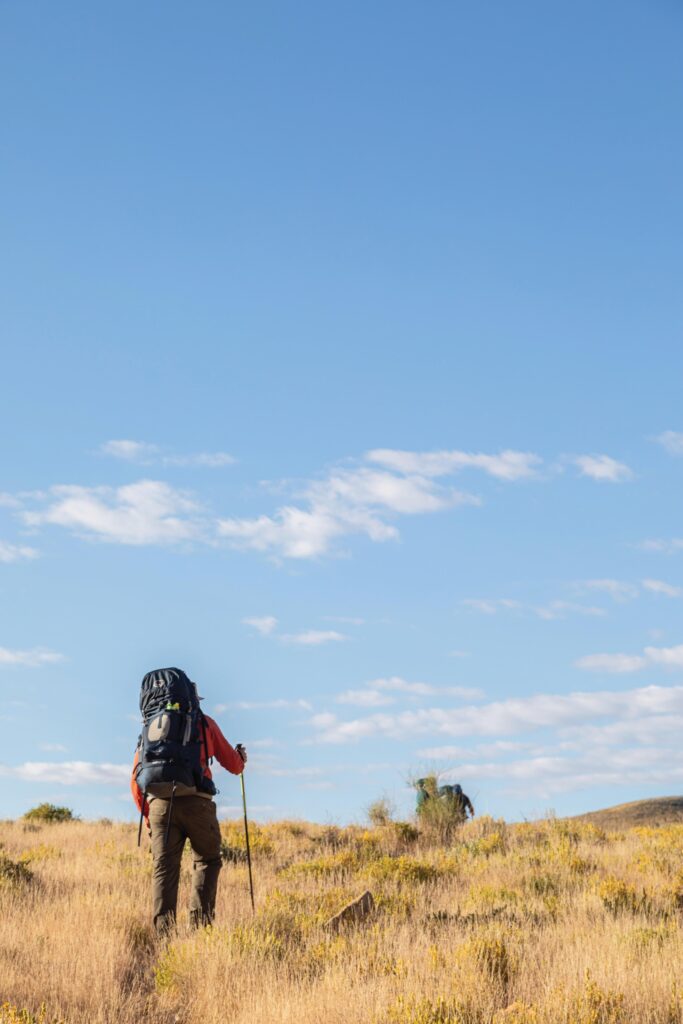
Whether you’re seeking an epic multi-day trek or a leisurely day hike, the Naukluft region offers an array of hiking trails, each promising unforgettable experiences amidst Namibia’s stunning natural beauty. Choose from a selection of routes to suit your preferences and abilities.
The Naukluft Hiking Trail meanders through spectacular mountain scenery. It is a tough trail that should only be attempted by fit hikers. The trail offers a choice of two four-day routes or an eight-day route. The circular four-day route from the Naukluft office covers 63 km, while the linear four-day route ending at Tsams Ost is 58 km. The full route covers 120 km. Basic overnight facilities are available on the trail. Two-day hikes are also offered: the Olive Trail which covers 10 km, while the 17 km Waterkloof Trail is more demanding and should not be attempted if you are not fit. The Dassie Trails on Namibgrens Guest Farm follow two circular routes of 45 km with shorter options. The Rock Sculpture Trail near Bloedkoppie in the Namib section of Namib-Naukluft National Park meanders through a natural open-air rock sculpture gallery. It takes about three hours to complete the walk.
HORSE-RIDING
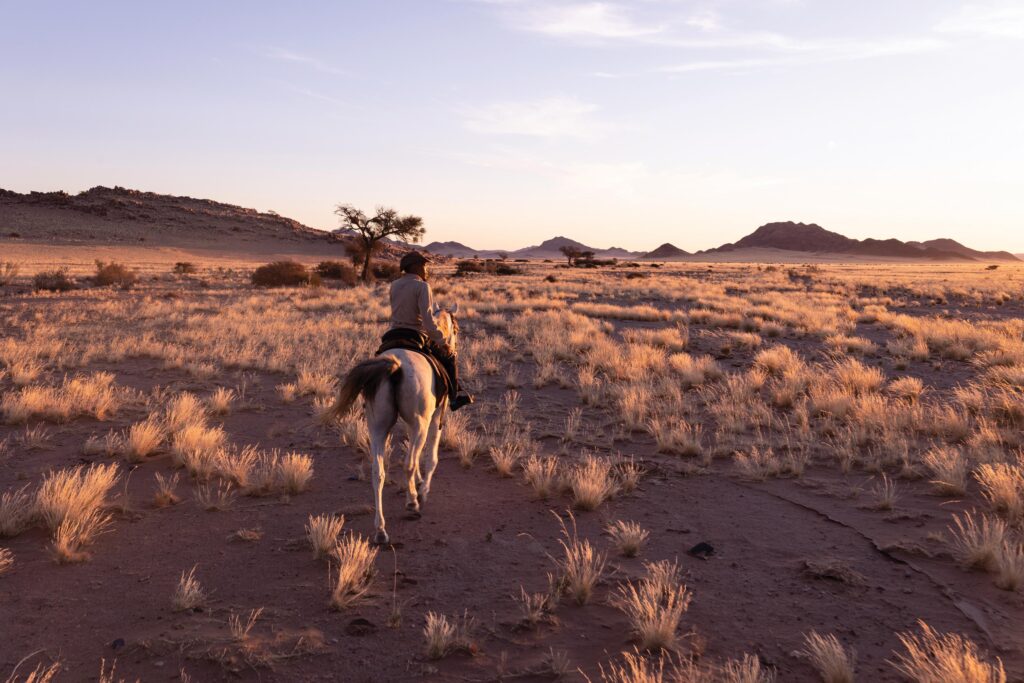
The Namibia Horse Safari Company offers four safaris for experienced riders in some of the most scenic parts of the country. Areas covered are the Namib Desert, Damaraland and the desert canyons of southern Namibia. The Wild Horse Safari in southern Namibia takes riders over the sand sea and the Namib plains and also includes seeing the wild horses of the Namib Desert. Eight of the ten nights on the trails are spent camping in the open, under the expansive sky. The packages are fully inclusive. Early morning and late afternoon rides are conducted from the Desert Homestead Lodge, 30 km south of Sesriem.
Accommodation
SOSSUSVLEI & NAMIB-NAUKLUFT NATIONAL PARK
- Kwessi Dunes
- Desert Homestead Lodge
- Namib Outpost
- Zannier Hotels Sonop
- Sossus Dune Lodge
- Sesriem Campsite
- Naukluft Camp
- Moon Mountain Lodge
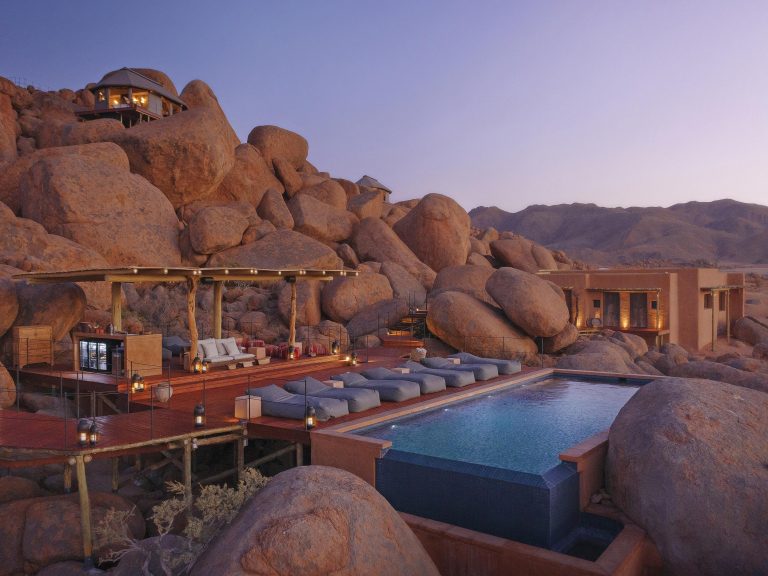
Zannier Hotels Sonop
Zannier Hotels Sonop Zannier Hotels Sonop is a luxurious tented camp nestled at the southern extremity of the Namib Desert, in the Hardap Region. Constructed on top of boulders, the ten spacious tents aim to offer a unique journey through time, with a refined British colonial atmosphere from the 1920s. Richly furnished with antiques made
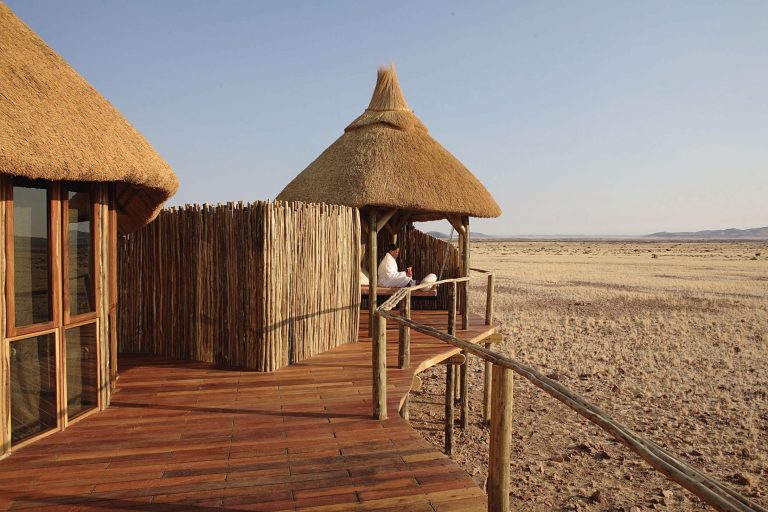
Sossus Dune Lodge
Sossus Dune Lodge Sossus Dune Lodge offers guests an evocative and life-changing experience. Situated within the park, guests will benefit from being able to reach Sossusvlei before sunrise, and to stay until after sunset, and on their return after an exhilarating day, to relax in the tranquillity and splendour of the Namib Desert, under the
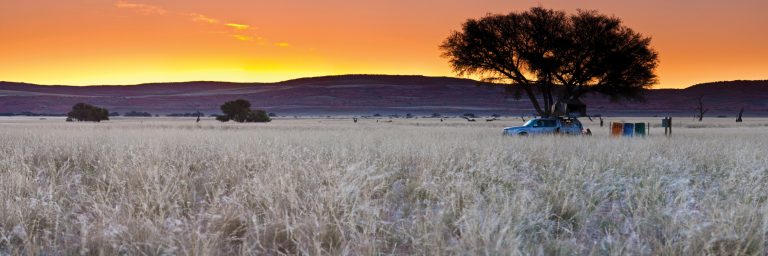
Sesriem Campsite
Sesriem Campsite At the entry to Sossusvlei is Sesriem Canyon, where millennia of erosion have incised a narrow gorge about 1 km in length. At the foot of the gorge, which plunges down 30 to 40 metres, are pools that become replenished after good rains. Sesriem derives its name from the time when pioneers tied
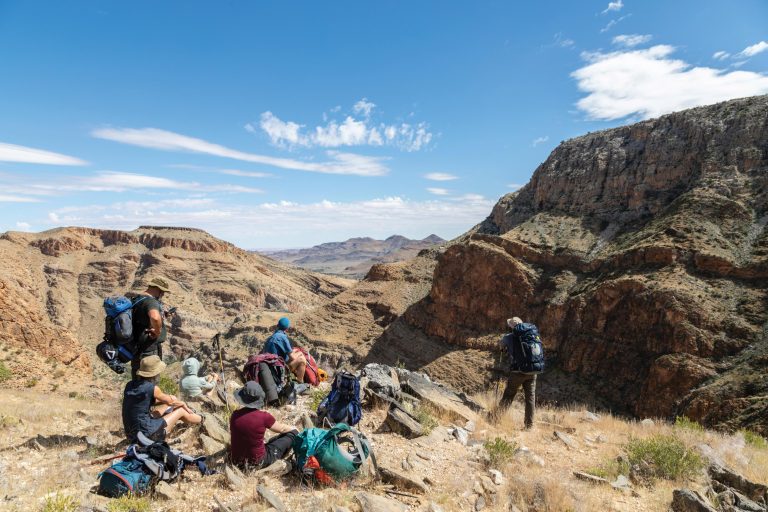
Naukluft Camp
Naukluft Camp The Naukluft section of the Namib-Naukluft National Park was created to serve as a sanctuary for Hartmann’s mountain zebra, which are endemic to Namibia. Other wildlife includes kudu, gemsbok, klipspringer, duiker, steenbok, leopard, baboon, black-backed jackal, bat-eared fox, African wildcat, caracal and aardwolf. Naukluft’s steep cliffs are nesting grounds for various cliff-breeding bird
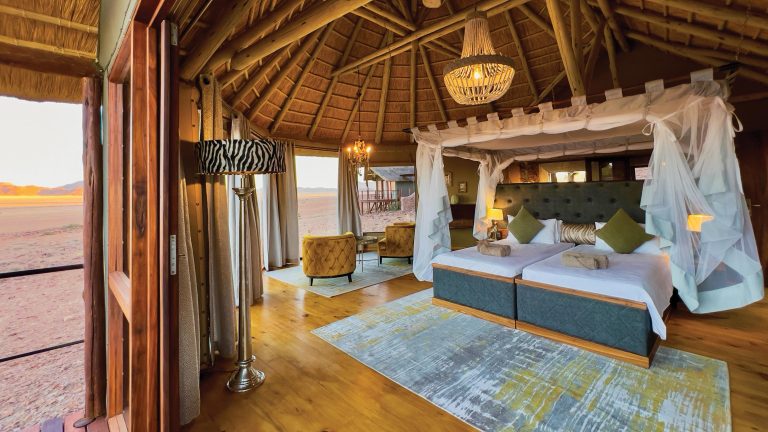
Namib Outpost
Namib Outpost The Namib Outpost is located in the Namib Tsaris Nature Reserve, a private nature reserve that is dedicated to protecting the unique and fragile desert environment. Namib Outpost lies well off the main roads with views into the world-famous Namib-Naukluft National Park, home to the Namib Sand Sea, a UNESCO World Heritage Site
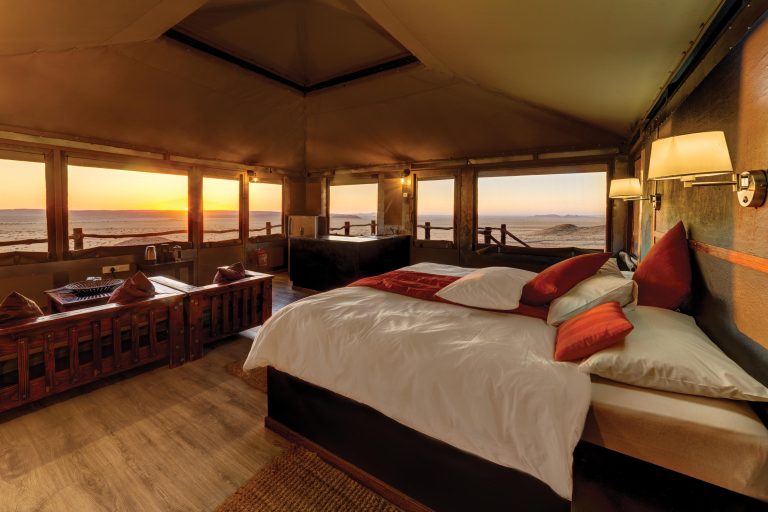
Moon Mountain Lodge
Moon Mountain Lodge Moon Mountain Lodge is a luxury tented lodge; situated at the foot of the Naukluft Mountains. The large airy rooms, each with a splash pool, offer comfort and respite with infinite views of the desert landscape. The lodge is situated 56km north of Sesriem, “the gateway to Sossusvlei”. Moon Mountain Lodge has

Kwessi Dunes
Kwessi Dunes Kwessi Dunes is located deep in Namibia’s striking NamibRand Nature Reserve, a vast desert wilderness of over 200,000 hectares. With its rolling desert plains and backdrop of craggy mountains and iconic red dunes, this is a place where time seems to stand still and the space is never-ending. Here, it’s not about chasing

Desert Homestead Lodge
Desert Homestead Lodge At Desert Homestead Lodge, an atmosphere of leisurely ease combines with panoramic views, a sizeable shaded deck area with 2 pools and sophisticated cuisine. The architecture is a modern interpretation of a stud farm with harmoniously matching furnishings and fittings in the main building which houses the restaurant, lobby and lounge, as
Community Campsites in this region
A community campsite is a type of camping facility managed and operated by local communities, often in collaboration with conservation organizations or tourism bodies. These campsites are designed to offer tourists a more immersive and culturally enriching experience, while also providing economic benefits to the locals.
- Garies Restcamp provides a glimpse of Baster hospitality in an otherwise undeveloped area.
- Located in Maltahöhe, //Hai-Sores Campsite comprises six sites and several demonstration Nama huts.

